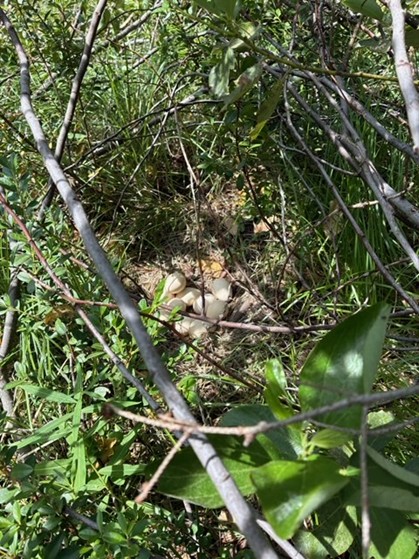Wild Turkey Habitat Boosted in Washington’s Lake Wenatchee Forest
EDGEFIELD, S.C. — Wild turkeys near Lake Wenatchee just got an enhancement to their habitat — and they’re not the only ones benefiting. In late July, the Chelan County Natural Resource Department, in partnership with the National Wild Turkey Federation and the Washington Department of Fish and Wildlife, wrapped up a habitat enhancement project in the Okanogan-Wenatchee National Forest. This project was funded and made possible through a grant provided by the Washington Department of Fish and Wildlife, creating healthier forests for wildlife and making the area more resilient to wildfire.
The project targeted 35 acres across two sites, where crews rolled up their sleeves to improve nesting, brooding and foraging conditions for wild turkeys. The work included carefully thinning small-diameter trees and clearing brush beneath the “drip line” — the area beneath a tree’s canopy where most rainfall hits the ground. This low-impact approach reduces soil disturbance while letting sunlight reach the forest floor, encouraging the growth of grasses and forbs that turkeys depend on.
The work was carefully balanced to keep some protective cover. Clumps of untreated brush and closely spaced trees were left intact, giving turkeys and other wildlife safe escape routes from predators. Cut material was consolidated into tidy 8-by-8-by-8-foot piles in sunny canopy gaps. While many of these will be burned to reduce fuel loads, some will be left in place as insect-rich foraging sites for young poults.

Crews also made sure to keep wildlife-friendly plants like serviceberry, elderberry, chokecherry and Woods’ rose, which serve as important food sources. The result is a more open, diverse understory that’s better for wildlife, less prone to severe wildfire and packed with native vegetation for year-round foraging.
Before treatment, the sites were either choked with vine maple or overcrowded with spindly young trees, making it difficult for turkeys to navigate, spot predators or find the open grassy spaces they prefer. Now, the landscape is a mosaic of open understory, diverse vegetation and safe cover — exactly the combination that supports healthy wild turkey populations.
The results are already visible. During post-treatment monitoring, a wild turkey nest containing 11 eggs was discovered in one of the treated areas — a strong indicator that the birds are quickly adapting to the improved conditions. Over time, the project is expected to increase turkey numbers in the region, create more hunting opportunities and support recruitment, retention and reactivation (R3) efforts to connect more people with the outdoors.

"It is rewarding to see almost immediate results from implementation and how the local turkey population is already responding in a positive way,” said Krista Modlin, NWTF district biologist for California, Oregon, Washington and Nevada.
In addition to enhancing habitat, the project reduces the density of small trees and ladder fuels that can carry flames into the forest canopy, making the area less vulnerable to severe wildfire. This is part of a broader effort to improve forest resilience, protect communities and safeguard wildlife habitat from the long-term impacts of climate change and fire.
By creating a forest that’s healthier, more open and rich in food and cover, the partnership between the Chelan County Natural Resource Department, the NWTF and the U.S. Forest Service is helping ensure that wild turkeys — and the people who value them — can enjoy this landscape for years to come.
About the National Wild Turkey Federation
Since 1973, the National Wild Turkey Federation has invested over half a billion dollars into wildlife conservation and has positively impacted over 24 million acres of critical wildlife habitat. The NWTF has also invested over $10 million into wild turkey research to guide the management of the wild turkey population and to ensure sustainable populations into perpetuity. The organization continues to deliver its mission by working across boundaries on a landscape scale through its Four Shared Values: clean and abundant water, healthy forests and wildlife habitat, resilient communities, and robust recreational opportunities. With the help of its dedicated members, partners and staff, the NWTF continues its work to provide Healthy Habitats. and Healthy Harvests. for future generations.
